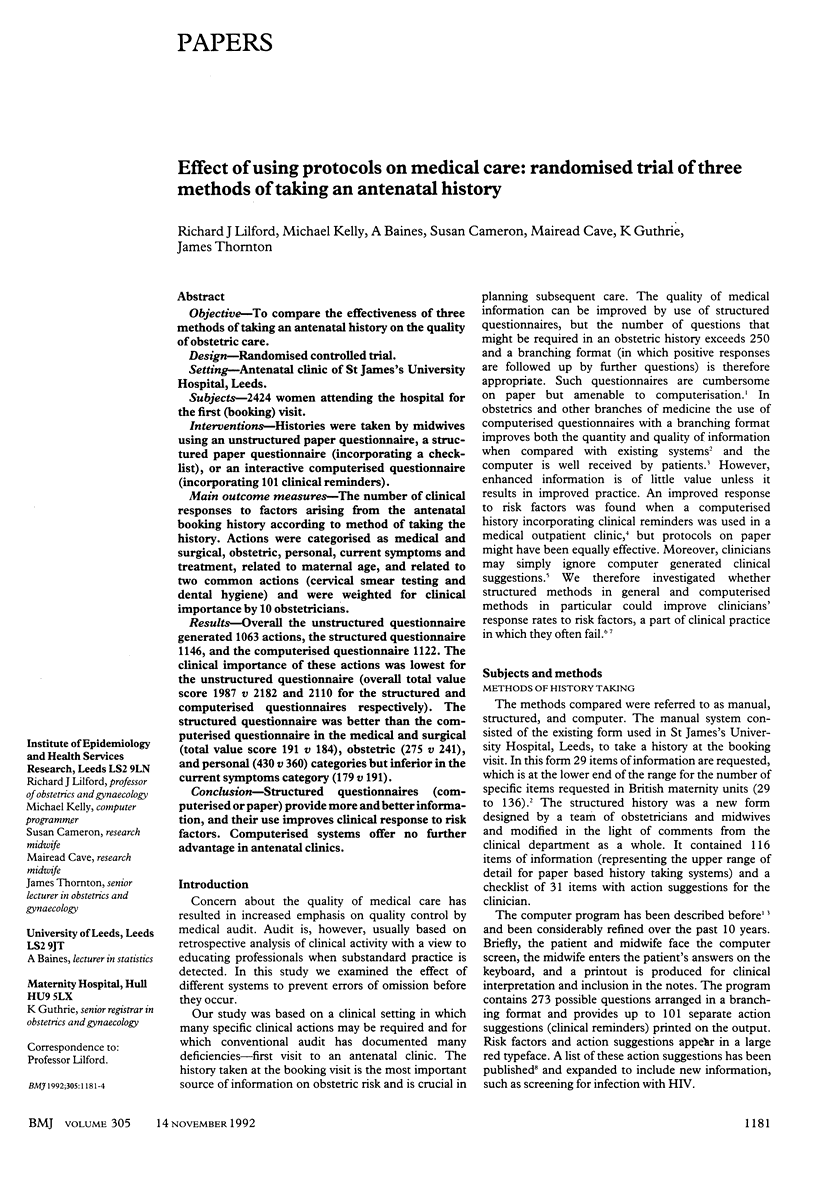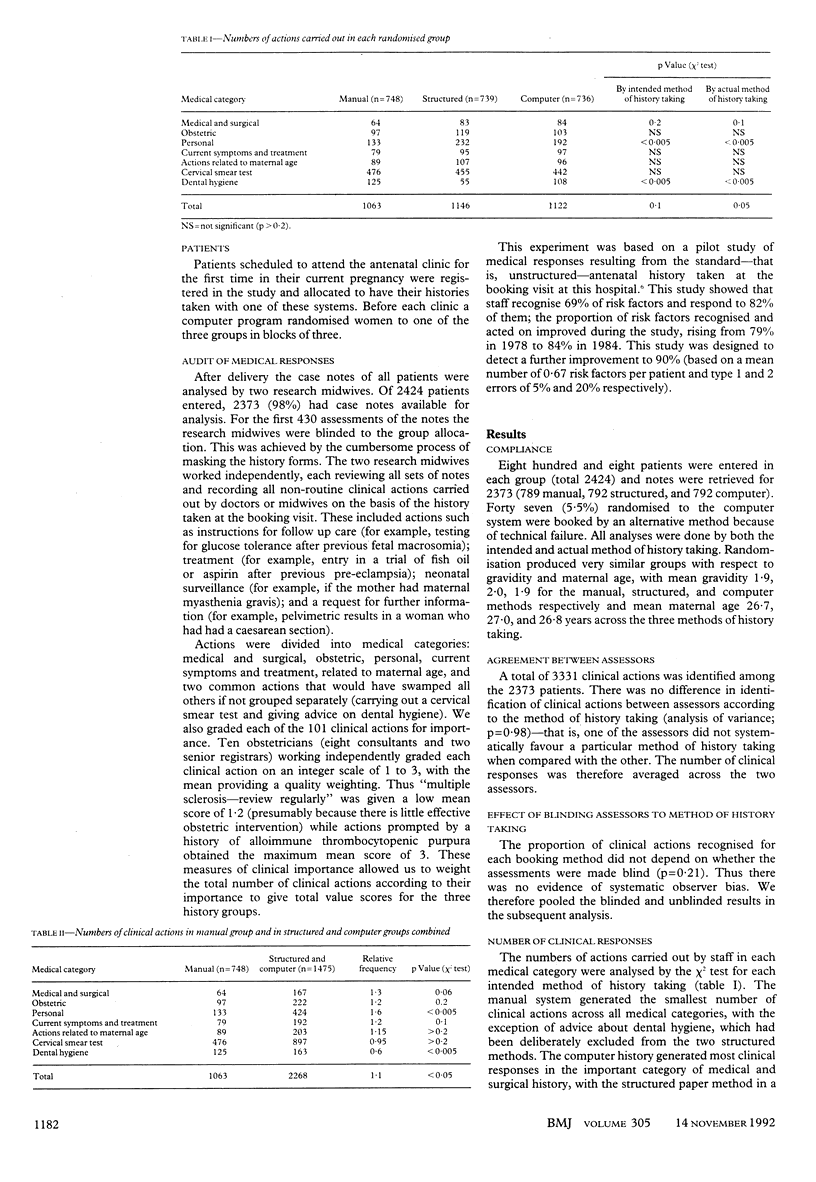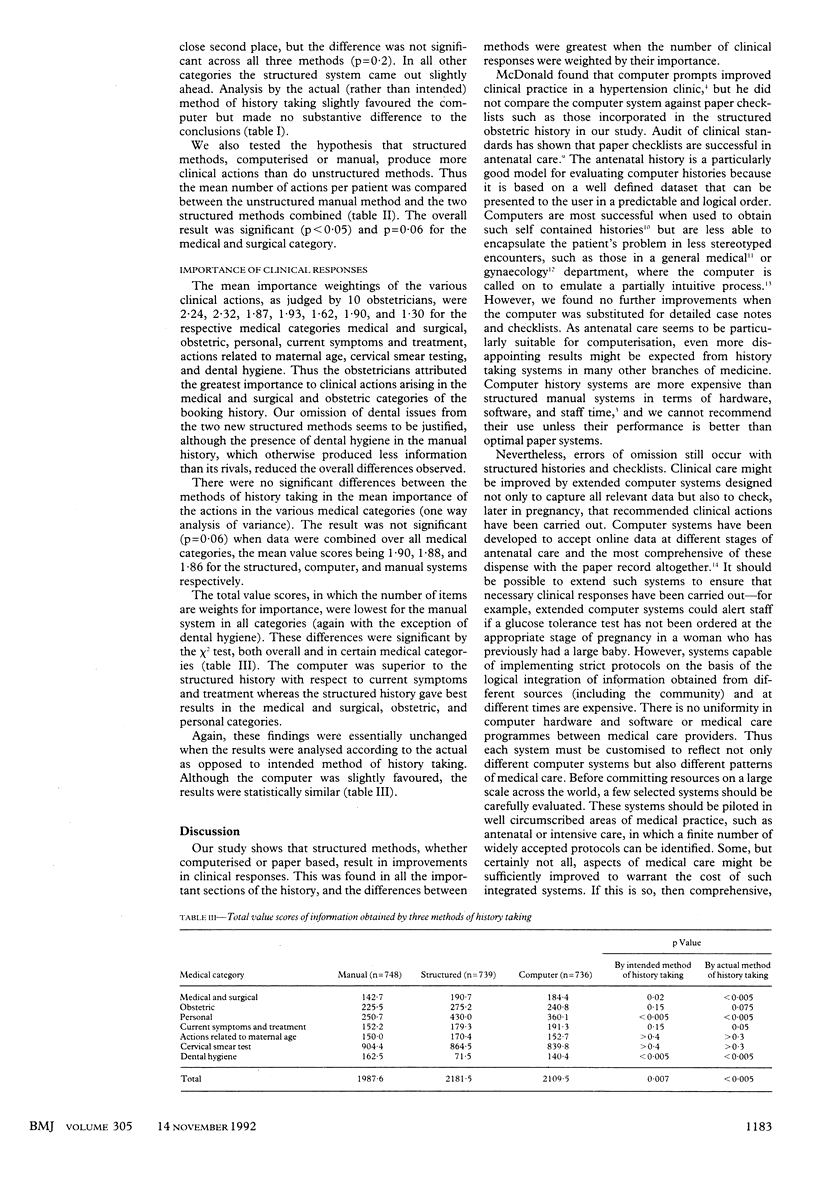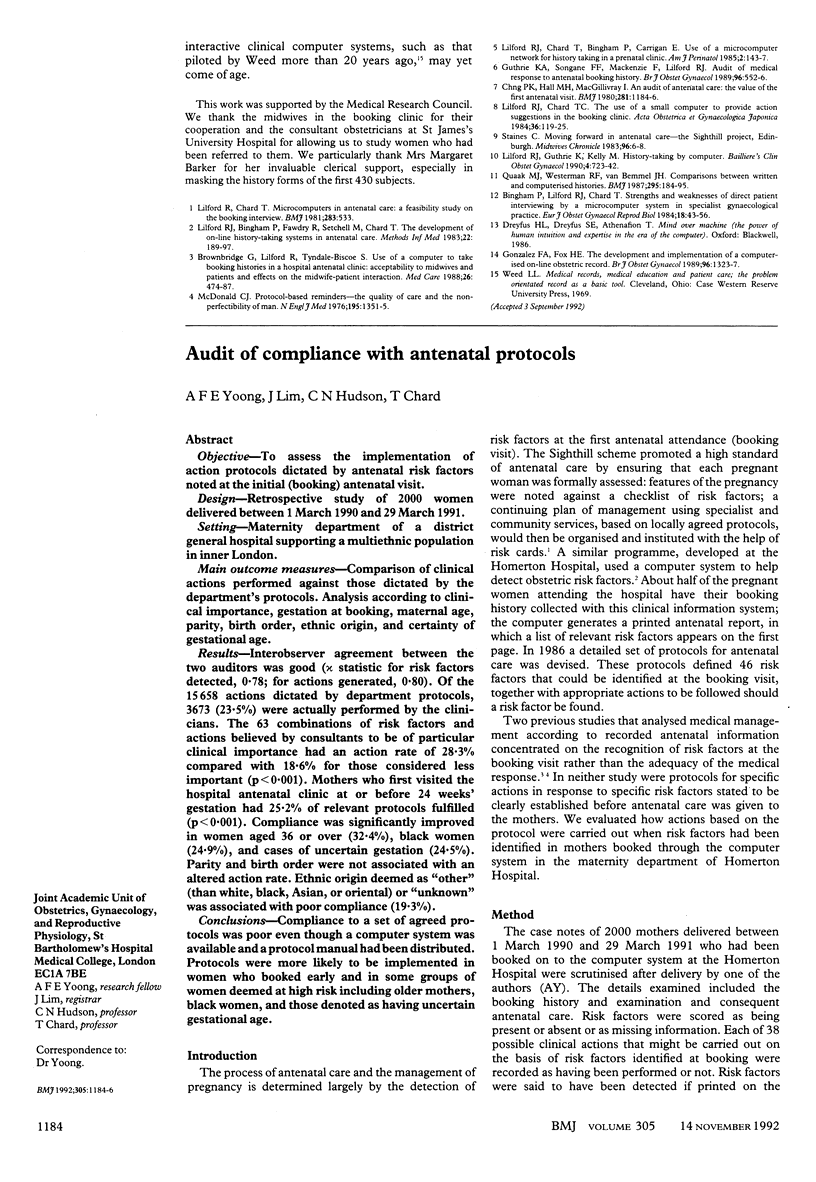Abstract
OBJECTIVE--To compare the effectiveness of three methods of taking an antenatal history on the quality of obstetric care. DESIGN--Randomised controlled trial. SETTING--Antenatal clinic of St James's University Hospital, Leeds. SUBJECTS--2424 women attending the hospital for the first (booking) visit. INTERVENTIONS--Histories were taken by midwives using an unstructured paper questionnaire, a structured paper questionnaire (incorporating a checklist), or an interactive computerised questionnaire (incorporating 101 clinical reminders). MAIN OUTCOME MEASURES--The number of clinical responses to factors arising from the antenatal booking history according to method of taking the history. Actions were categorised as medical and surgical, obstetric, personal, current symptoms and treatment, related to maternal age, and related to two common actions (cervical smear testing and dental hygiene) and were weighted for clinical importance by 10 obstetricians. RESULTS--Overall the unstructured questionnaire generated 1063 actions, the structured questionnaire 1146, and the computerised questionnaire 1122. The clinical importance of these actions was lowest for the unstructured questionnaire (overall total value score 1987 v 2182 and 2110 for the structured and computerised questionnaires respectively). The structured questionnaire was better than the computerised questionnaire in the medical and surgical (total value score 191 v 184), obstetric (275 v 241), and personal (430 v 360) categories but inferior in the current symptoms category (179 v 191). CONCLUSION--Structured questionnaires (computerised or paper) provide more and better information, and their use improves clinical response to risk factors. Computerised systems offer no further advantage in antenatal clinics.
Full text
PDF



Selected References
These references are in PubMed. This may not be the complete list of references from this article.
- Bingham P., Lilford R. J., Chard T. Strengths and weaknesses of direct patient interviewing by a microcomputer system in specialist gynaecological practice. Eur J Obstet Gynecol Reprod Biol. 1984 Sep;18(1-2):43–56. doi: 10.1016/0028-2243(84)90032-7. [DOI] [PubMed] [Google Scholar]
- Brownbridge G., Lilford R. J., Tindale-Biscoe S. Use of a computer to take booking histories in a hospital antenatal clinic. Acceptability to midwives and patients and effects on the midwife-patient interaction. Med Care. 1988 May;26(5):474–487. doi: 10.1097/00005650-198805000-00004. [DOI] [PubMed] [Google Scholar]
- Chng P. K., Hall M. H., MacGillivray I. An audit of antenatal care: the value of the first antenatal visit. Br Med J. 1980 Nov 1;281(6249):1184–1186. doi: 10.1136/bmj.281.6249.1184. [DOI] [PMC free article] [PubMed] [Google Scholar]
- Gonzalez F. A., Fox H. E. The development and implementation of a computerized on-line obstetric record. Br J Obstet Gynaecol. 1989 Nov;96(11):1323–1327. doi: 10.1111/j.1471-0528.1989.tb03231.x. [DOI] [PubMed] [Google Scholar]
- Guthrie K. A., Songane F. F., Mackenzie F., Lilford R. J. Audit of medical response to antenatal booking history. Br J Obstet Gynaecol. 1989 May;96(5):552–556. doi: 10.1111/j.1471-0528.1989.tb03254.x. [DOI] [PubMed] [Google Scholar]
- Lilford R. J., Bingham P., Fawdry R., Setchell M., Chard T. The development of on-line history-taking systems in antenatal care. Methods Inf Med. 1983 Oct;22(4):189–197. [PubMed] [Google Scholar]
- Lilford R. J., Chard T., Bingham P., Carrigan E. Use of a microcomputer network for history taking in a prenatal clinic. Am J Perinatol. 1985 Apr;2(2):143–147. doi: 10.1055/s-2007-999933. [DOI] [PubMed] [Google Scholar]
- Lilford R. J., Chard T. Microcomputers in antenatal care: a feasibility study on the booking interview. Br Med J (Clin Res Ed) 1981 Aug 22;283(6290):533–536. doi: 10.1136/bmj.283.6290.533. [DOI] [PMC free article] [PubMed] [Google Scholar]
- Lilford R. J., Guthrie K., Kelly M. History-taking by computer. Baillieres Clin Obstet Gynaecol. 1990 Dec;4(4):723–742. doi: 10.1016/s0950-3552(05)80341-4. [DOI] [PubMed] [Google Scholar]
- McDonald C. J. Protocol-based computer reminders, the quality of care and the non-perfectability of man. N Engl J Med. 1976 Dec 9;295(24):1351–1355. doi: 10.1056/NEJM197612092952405. [DOI] [PubMed] [Google Scholar]
- Quaak M. J., Westerman R. F., van Bemmel J. H. Comparisons between written and computerised patient histories. Br Med J (Clin Res Ed) 1987 Jul 18;295(6591):184–190. doi: 10.1136/bmj.295.6591.184. [DOI] [PMC free article] [PubMed] [Google Scholar]
- Staines C. Moving forward in antenatal care--the Sighthill Project, Edinburgh. Midwives Chron. 1983 Sep;96(1148):suppl–8. [PubMed] [Google Scholar]


